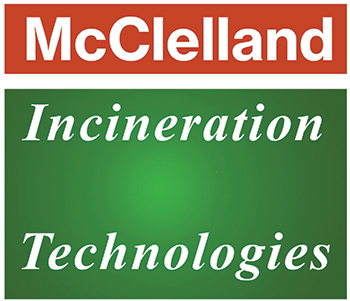 Introduction
Introduction
In the quest for sustainable energy solutions, waste-to-energy (WtE) incinerators stand out as a remarkable example of innovation.
These advanced facilities not only help manage municipal and industrial waste, but also generate clean, renewable energy — supporting India’s transition to a low-carbon economy.
In this article, we explore how waste-to-energy incineration works, its role in power generation, and its contribution to a sustainable future.
Learn more about industrial incinerator solutions at www.mcclellandindia.com — a leading incinerator supplier in India, based in Mumbai, with projects across Gujarat, Maharashtra, and nationwide.
How Waste-to-Energy Incineration Works
Modern waste-to-energy incinerators use advanced technologies to convert municipal solid waste (MSW) into usable electricity or heat — delivering a dual benefit of waste reduction and energy production.
The process involves:
✅ Combustion of waste in high-temperature incineration chambers
✅ Generation of heat during combustion
✅ Use of heat to produce steam
✅ Steam drives turbines connected to electricity generators
The result? Clean electrical power that can be fed into the national grid — supporting homes, businesses, and industries across India.
Additionally, waste-to-energy heat can be used for district heating — supplying warmth to residential and commercial buildings.
Environmental Benefits and Climate Impact
Waste-to-energy incineration delivers key environmental benefits:
✅ Reduces reliance on fossil fuels → offsets carbon-intensive electricity generation
✅ Diverts waste from landfills → mitigates methane emissions from organic decomposition
✅ Supports India’s climate action goals → contributes to greenhouse gas reduction
Moreover, WtE facilities provide a reliable source of baseload power — complementing variable renewable sources like solar and wind.
Addressing Landfill Overcrowding
Landfill capacity is an ongoing challenge for urban centers across India.
By diverting waste from landfills, waste-to-energy incinerators:
- Alleviate landfill overcrowding
- Reduce environmental risks from soil and water contamination
- Optimize land use in fast-growing urban areas
Challenges and Emissions Control
It is important to acknowledge potential challenges in WtE incineration — particularly regarding air emissions:
-
Particulate matter
-
Heavy metals
-
Dioxins and furans
However, modern WtE facilities employ state-of-the-art emissions control systems, including:
- Electrostatic precipitators
- Baghouse filters
- Selective catalytic reduction (SCR) systems
These technologies ensure that air quality and public health are protected — in full compliance with CPCB and SPCB standards.
Conclusion
Waste-to-energy incinerators play a vital role in India’s sustainable waste management and clean energy transition.
By converting waste into valuable energy resources, WtE facilities contribute to:
- Environmental protection
- Energy security
- Circular economy goals
- The shift to a low-carbon economy
With continued technological innovation and investment in clean energy infrastructure, waste-to-energy incineration has the potential to shape a greener, more sustainable future for generations to come.
Ready to explore industrial incinerator solutions? Connect with Mc Clelland Engineers Pvt. Ltd. — India’s trusted partner in waste-to-energy innovation.

